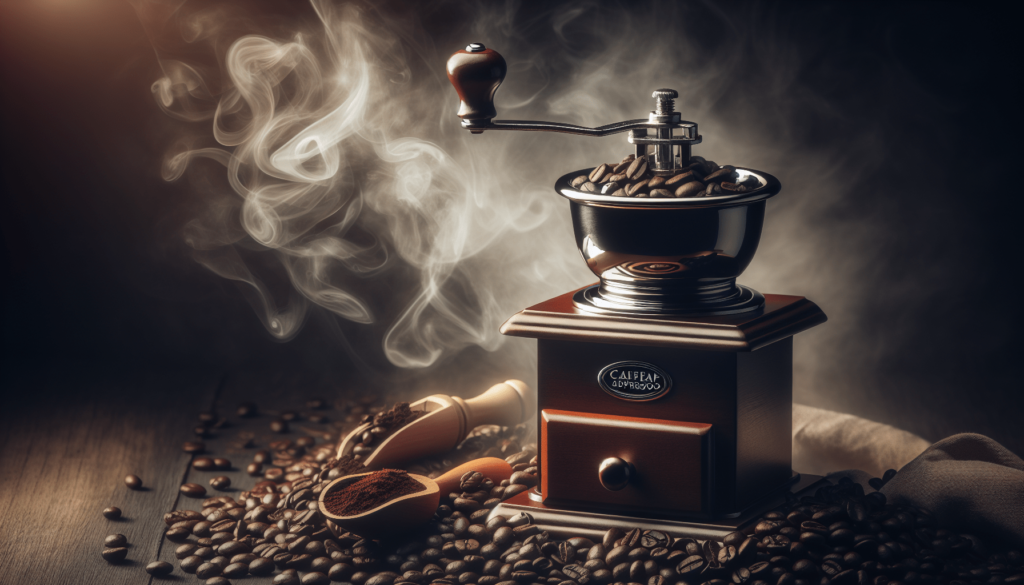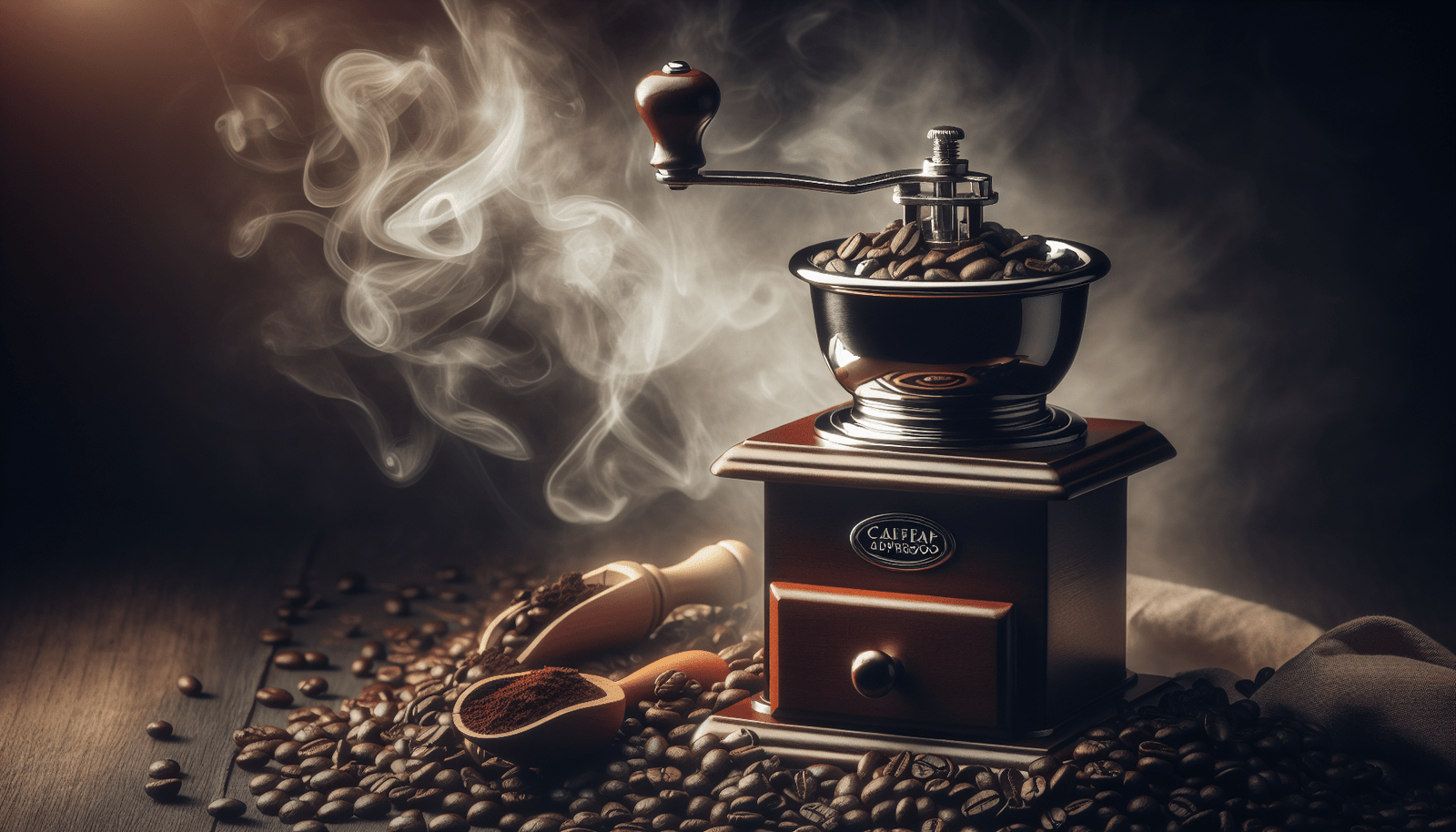You’re a coffee lover, craving the rich and bold taste of espresso, but perhaps you’re looking to cut back on your caffeine intake. Fret not! In this article, we’ll reveal the secrets of making your beloved espresso beans decaf without sacrificing an ounce of flavor. From different methods to tried-and-tested techniques, you’ll soon discover that decaf can be just as enjoyable and flavorful as its caffeinated counterpart. So, get ready to embark on a journey of discovering how to savor the perfect cup of decaf espresso, without compromising on taste.
Choosing the Right Method
Understanding the Different Methods
When it comes to decaffeinating espresso beans, there are several methods to choose from. Each method has its own unique process and impact on flavor. It’s important to understand these methods before making a decision.
Considering the Flavor Retention
One of the key factors to consider when choosing a decaffeination method is how well it retains the flavor of the espresso beans. Some methods may strip away too much of the flavor, resulting in a bland and uninspiring cup of coffee. Others may better preserve the flavor profile, allowing you to enjoy the rich and complex taste of your espresso beans.
Selecting the Suitable Method for Your Beans
Choosing the right decaffeination method for your espresso beans ultimately depends on your personal preferences. Do you prioritize the retention of flavor or the complete removal of caffeine? By considering these factors, you can make an informed decision and select a method that suits your needs.
Water Process Decaffeination
Exploring the Water Process Method
The water process method is one of the most common ways to decaffeinate espresso beans. It involves soaking the beans in water to remove the caffeine while retaining the flavor compounds. This method is often favored by those who want a more natural and chemical-free decaffeination process.
Steps for Water Process Decaffeination
In the water process method, the espresso beans are first soaked in hot water to dissolve and extract the caffeine. The water is then filtered through activated charcoal to remove the caffeine molecules, while retaining the flavor compounds. The decaffeinated beans are then dried and roasted to perfection.
Effect on Flavor Profile
The water process method has been praised for its ability to retain the flavor and aroma of espresso beans. The use of water as the solvent allows for a gentle extraction of caffeine, resulting in a milder impact on the overall flavor profile. As a result, you can still enjoy a delicious cup of decaf espresso that closely resembles the taste of its caffeinated counterpart.

Carbon Dioxide (CO2) Decaffeination
Understanding CO2 Decaffeination
Carbon dioxide (CO2) decaffeination is another popular method for removing caffeine from espresso beans. In this process, CO2 gas is used as a solvent to extract the caffeine while leaving the flavor compounds intact. This method is often favored by those who value precision and control over the decaffeination process.
The CO2 Decaffeination Process
During CO2 decaffeination, the espresso beans are placed in a chamber where pressurized CO2 is introduced. The CO2 gas acts as a solvent and selectively removes the caffeine molecules from the beans. The caffeine-rich CO2 is then passed through an activated charcoal filter to separate the caffeine, leaving behind decaffeinated espresso beans.
Preservation of Flavor
One of the main advantages of CO2 decaffeination is its ability to effectively retain the flavor compounds of espresso beans. The use of CO2 as a solvent is gentle and precise, ensuring that only the caffeine is removed while the flavor remains intact. This results in a decaf espresso that still maintains its rich and complex taste.
Swiss Water Process (SWP)
Overview of the SWP Method
The Swiss Water Process (SWP) is a chemical-free decaffeination method that relies on the use of water and osmosis to remove caffeine from espresso beans. This method is often preferred by those seeking a more natural decaffeination process without the use of chemicals or solvents.
Steps Involved in SWP
In the SWP method, the espresso beans are first soaked in hot water, which extracts the caffeine along with the flavor compounds. The resulting solution, known as “green coffee extract,” is then passed through a series of activated charcoal filters to remove the caffeine. The decaffeinated beans are then dried and ready for roasting.
Maintaining the Bean Flavor
The Swiss Water Process is renowned for its ability to preserve the flavor integrity of espresso beans. By using only water and osmosis, the SWP method selectively removes the caffeine while leaving the flavor compounds intact. This ensures that the decaf espresso retains its unique taste and aroma, providing a satisfying coffee experience.

Ethyl Acetate (EA) Decaffeination
Exploring the Ethyl Acetate Method
Ethyl Acetate (EA) decaffeination is a chemical-based method that uses a naturally derived solvent to remove caffeine from espresso beans. This method is often preferred by those who seek an efficient and cost-effective decaffeination process.
The EA Decaffeination Process
During EA decaffeination, espresso beans are first steamed to facilitate the extraction of caffeine. They are then soaked in a solution containing ethyl acetate, which acts as a solvent to remove the caffeine. The decaffeinated beans are then thoroughly rinsed to remove any residual solvent and dried for roasting.
Impacts on Flavor
The ethyl acetate method can have a slight impact on the flavor profile of espresso beans. The use of a solvent introduces an additional element to the decaffeination process, which may result in a subtle alteration of the taste. However, when performed correctly, EA decaffeination can still produce decaf espresso beans with an enjoyable flavor and aroma.
Applying the Decaffeination Process
Understanding the Roasting Impact
It’s important to note that the decaffeination process can affect the way espresso beans react during roasting. Some decaffeination methods may result in beans that roast differently than their caffeinated counterparts. This can impact the overall flavor and aroma of the final product.
Choosing Roasting Methods
To ensure that your decaf espresso beans maintain their desired flavor profile, it’s important to select a roasting method that complements the beans. Different decaffeinated beans may require adjustments to the roasting process to achieve optimal results. Experimentation and fine-tuning are key to producing a consistently flavorful cup of decaf espresso.
Implementing Decaffeination
Once you have chosen a decaffeination method, it’s crucial to implement the process correctly. Follow the specific steps and guidelines provided by the chosen decaffeination method to ensure the best possible results. Attention to detail and adherence to proper procedures will help you achieve the desired flavor in your decaf espresso beans.
Preserving Flavor during Decaffeination
Controlling Temperature and Time
During the decaffeination process, controlling the temperature and time is crucial to preserving the flavor of espresso beans. Both factors can significantly impact the extraction of caffeine and flavor compounds. By closely monitoring and adjusting the temperature and time parameters, you can ensure the delicate balance between caffeine removal and flavor retention.
Minimizing Oxygen Exposure
Oxygen exposure can be detrimental to the flavor of espresso beans, both during and after the decaffeination process. It is essential to minimize oxygen exposure as much as possible to preserve the freshness and flavor profile. Packaging the decaffeinated beans in airtight containers and storing them properly can help prevent flavor degradation due to oxygen exposure.
Using Airtight Storage Containers
To maintain the flavor of decaffeinated espresso beans, it is recommended to store them in airtight containers. This will protect the beans from exposure to moisture, light, and oxygen, all of which can negatively impact their flavor. By storing the beans properly, you can ensure that they maintain their optimal taste and aroma for an extended period.
Quality Control Measures
Testing for Caffeine Levels
To ensure that your decaffeinated espresso beans meet the desired caffeine content, it’s important to regularly test the caffeine levels. This can be done through laboratory analysis or by working with reputable decaffeination facilities that provide detailed reports on the caffeine content of the beans. By implementing thorough quality control measures, you can confidently offer decaf espresso that meets industry standards.
Sensory Evaluation of Flavor
In addition to testing for caffeine levels, conducting sensory evaluations of the flavor is essential. This involves tasting and evaluating the aroma, richness, and overall taste of the decaf espresso. By involving experienced tasters or following established sensory evaluation protocols, you can ensure that the flavor of your decaf espresso beans meets your expectations.
Meeting Industry Standards
To maintain consistency and quality in your decaffeinated espresso beans, it’s crucial to meet industry standards. This includes adhering to regulations and guidelines set by organizations such as the Specialty Coffee Association and other coffee industry bodies. By following these standards, you can ensure that your decaf espresso beans are of the highest quality and satisfy customer expectations.
Tips for Flavor Enhancement
Experimenting with Blend Combinations
To enhance the flavor of your decaf espresso, consider experimenting with blend combinations. By carefully selecting different coffee beans and creating unique blends, you can create a decaf espresso with a complex and enjoyable flavor profile. Experimentation and creativity are key to finding the perfect blend that satisfies your taste preferences.
Using Freshly Roasted Decaf Beans
When it comes to flavor, freshness is crucial. Using freshly roasted decaf beans can significantly enhance the taste of your espresso. Ensure that the decaf beans are roasted shortly before use to maximize their flavor potential. This will allow you to enjoy a vibrant and satisfying cup of decaf espresso.
Grinding Techniques for Optimal Extraction
The grinding technique plays a significant role in the extraction process and ultimately affects the flavor of your decaf espresso. It’s important to find the optimal grind size that allows for proper extraction. Experiment with different grinding techniques to find the perfect balance between extraction efficiency and flavor intensity for your decaf espresso.
Maintaining Consistent Decaf Flavor
Storing Decaffeinated Beans Properly
Proper storage is essential for maintaining the flavor of decaf espresso beans over time. Store the beans in a cool, dry, and dark environment to prevent flavor degradation. Additionally, avoid storing decaffeinated beans with strong-smelling substances, as they can absorb odors and impact the overall flavor.
Avoiding Exposure to Moisture
Moisture can be detrimental to the flavor and freshness of decaffeinated espresso beans. It is crucial to prevent exposure to moisture during storage, as it can lead to spoilage and off-flavors. Keep the decaf beans in an airtight container and avoid storing them in humid or damp conditions.
Monitoring Flavor Changes Over Time
Flavor can change over time, even with proper storage. It’s important to regularly monitor the flavor of your decaf espresso beans to ensure consistency and quality. Sampling the beans at different intervals and documenting any flavor changes will help you identify any potential issues and make adjustments as necessary.
By following these guidelines and implementing the appropriate decaffeination method, you can enjoy a flavorful and satisfying cup of decaf espresso. Remember to experiment, fine-tune, and pay attention to detail to achieve optimal results and maintain consistent flavor. Cheers to flavorful decaf espresso!

